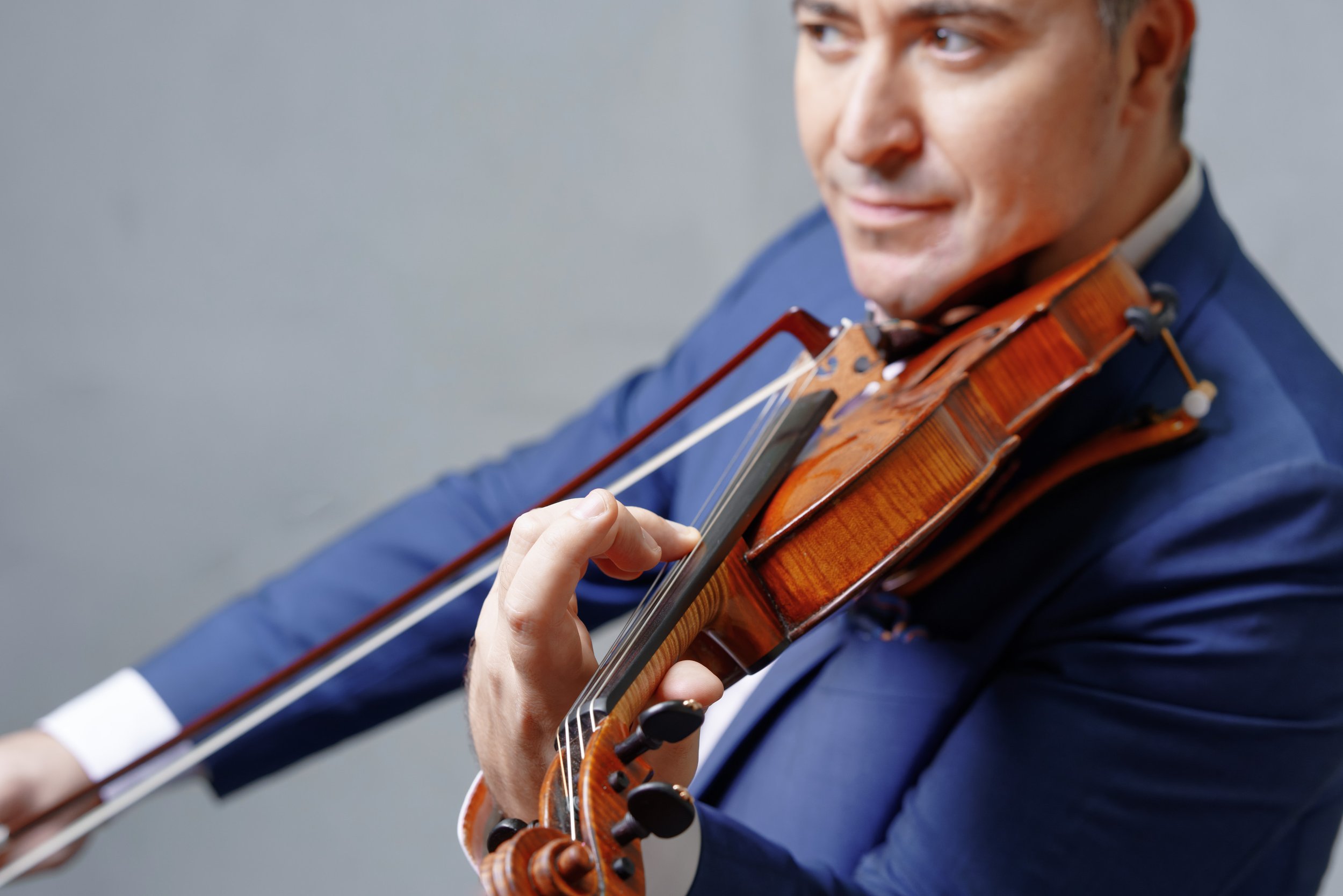
Vengerov’s Views
8 part exclusive educational teaching series
Part 3
Vibrato as a source of colour and expression
Photo © Christian Schneider
Introduction
Vibrato is one of the most important expressive tools available to string players. With our instrument, we imitate the human voice and what the voice can do, especially the natural vibrato of a singer. On the violin, we have the ability to control our vibrato very precisely, and to enrich the colour palette we can draw from we must develop the technique of both left and right hand.
It is very difficult to explain in only a few words all the nuances of vibrato - this is a topic which requires a lot of analysis to fully understand, and one could easily write a whole essay! Nevertheless, in this post I will try to give a few words to start with, and share with you some of the main things to think about when developing your vibrato to help you fully express the message of the music.
How much vibrato is the right amount?
“Use vibrato to help the violin sing naturally, like the human voice.”
A room already has its own vibrations - it has an acoustic. Then your instrument vibrates too, your bow, even your body and your soul. Everything must work together. If you use a lot of vibrato, for a resonant room it might be too much, but for a dry acoustic it could be the right amount. You must use your ears, and adjust your approach to suit each different performance space.
However, it is not only a question of physics and the physical resources you work with. Different composers are like different planets, and each demands a different colouring and style - the right vibrato for Mozart is different from Tchaikovsky, or Shostakovich. And then in earlier music, in Bach for example, it is also a question of the instrument and bow you use - you could choose to play a period instrument with a baroque bow, or use a modern setup of violin and bow.
Choose a vibrato according to how you feel about the music, the style you choose to perform in, and colours you would like to produce. So, first you must imagine the vibrato you would like, and then both your hands must be sufficiently under your control to follow what your brain tells them.
Should vibrato stay constant, or change?
“Vibrato can be fast, slow, wide, narrow - the possibilities are limitless, and which vibrato you choose depends on what you want to say in music.”
When the harmony changes, something must change, this is the rule. Changing vibrato is one possible way to show the change in colour, in coordination with the right hand.
Conversely, when the harmony does not change, the colour usually should not change too much - this can be a shock to the listener’s ear and prevents you from building a longer phrase.
How and when you use vibrato should be a deliberate choice, a tool to help you express the colours in music. Sometimes students use vibrato without paying much attention - vibrating constantly, or randomly according to when it feels comfortable. This adds no meaning or expression to the music, and can even detract from what you are trying to convey. How and when you use vibrato must always be in your control, just like you modulate your voice expressively when you speak.
What about non-vibrato?
“Non-vibrato is also an important colour, like the white in the palette of a painter.”
Non-vibrato is a great resource, a very powerful one, and we often underestimate its importance.
An example of when it can be very useful is a sustained longer note, while the harmony changes in the other parts. In this case, one possibility is to begin the note non-vibrato, and then start to vibrate when the colour changes. After non-vibrato, the warmth of the vibrato comes like a saviour.
Technical considerations for vibrato
"Both the left and right hand are important for vibrato, and always have to work together.”
Vibrato starts from the right hand, with the speed and pressure of the bow causing the string to vibrate. And then, whatever you cannot do with the right hand, the left hand comes to help.
In the left hand, vibrato starts from the phalangeal joint, the tip of the finger, with your whole left hand very relaxed and free.
However, it is a free right hand which makes the sound very vibrant and rich in overtones, not only the left hand vibrato. Use the speed of the bow and avoid pushing too much into the string - this can choke the sound.
To help develop the right hand, I recommend to work first of all without vibrato, and then only add vibrato in the left hand when you really need it.
The left and right hand always have to be interconnected and work together. You must always be in control of your body, and the most important thing is to use your ears to guide you.
To conclude
Choosing vibrato is like a painter choosing colours. There are many more things to think about than only what the left hand is doing. You must listen and train your ear - this is the most important organ for all musicians, even above our hands.
I hope these recommendations are helpful for those who would like to develop or teach vibrato, or are interested to learn more about what goes on behind the scenes in the “chef’s kitchen” of a violinist. With vibrato we can harness the natural vibrations of our body, instrument and acoustic, and breathe life into our sound.
Watch the full teaching video below, where I explain in further detail and demonstrate the concepts introduced in this article:
In this new educational series “Vengerov’s Views”, I cover key topics which come up frequently in my masterclasses, chosen to mirror the journey of learning. It all starts and ends with the source, the music, and understanding and telling the story behind it. And then along the way, as performers we must overcome some technical challenges to be able to bring our musical ideas to life.
By complementing the written articles with videos of examples selected from my masterclasses and performances, I hope to illustrate the concepts further and overcome the limitations of writing about music, and to create a useful educational resource. It has been an interesting challenge to document in writing for the first time some thoughts about my approach to music and playing the violin - let me know what you think!
This series was curated and co-written by Anna Gould, and released in partnership with The Violin Channel.

